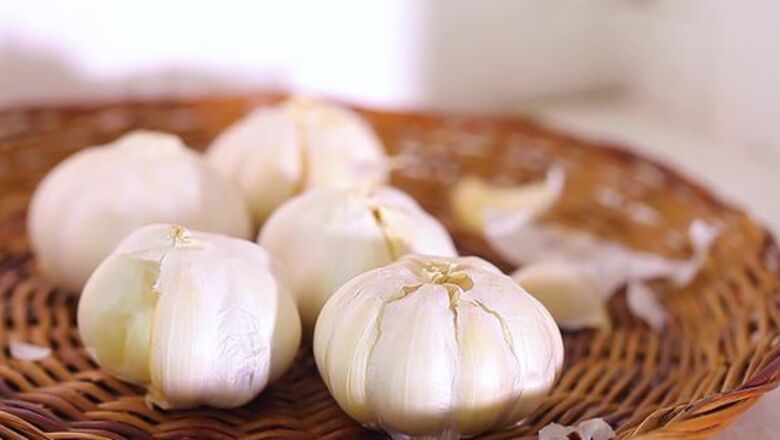
views
- Store garlic at room temperature in a dark area with good air circulation.
- Store garlic in the freezer whole and unpeeled or freeze the peeled cloves.
- Preserve the garlic by storing it in oil, wine, or vinegar.
Best Storage Practices
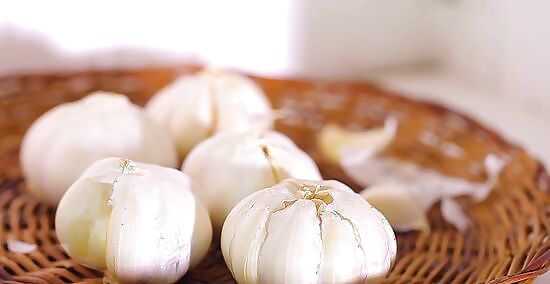
Store garlic at room temperature. Many people make the mistake of storing garlic in the refrigerator, but garlic actually does best at a cool room temperature of around 60 °F (16 °C). Does garlic go in the fridge? Homegrown, new-season garlic will need to be refrigerated directly upon harvesting. Also called "young wet" garlic, these garlic bulbs are harvested in early summer and have a mild flavor. They do not need to be dried and can be refrigerated for up to a week. Typically, though, refrigerating garlic is a bad idea as it causes the bulb to deteriorate. If you have chopped or minced fresh garlic, you can store it in the refrigerator in a sealed container for a short period, but use it as soon as possible. Freezing is not recommended, because it changes the consistency and flavor of the garlic.
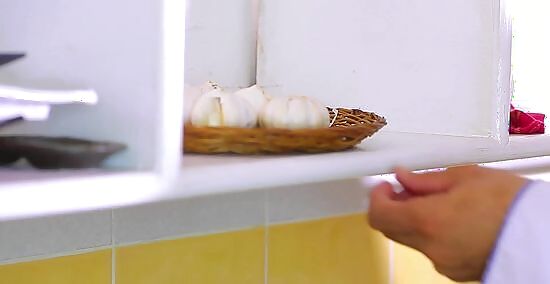
Keep garlic in a location with good air circulation. Storing your garlic bulbs in a well-ventilated spot allows the garlic to "breathe" and will extend its shelf-life. Garlic bulbs can be kept in a mesh or wire basket, a small bowl with ventilation holes or even a paper bag. Do not store fresh garlic bulbs in plastic bags or sealed containers. This can cause mold and sprouting.
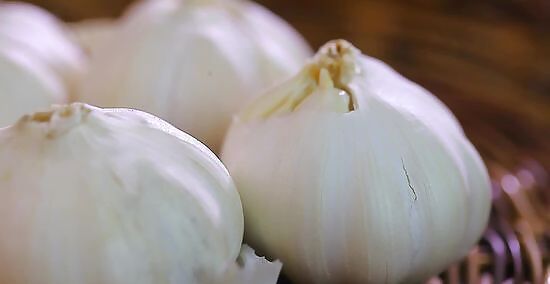
Store fresh garlic bulbs in a dark, dry spot. Your kitchen cupboard or a shady corner of your kitchen countertop is perfect for this. Keep your garlic away from sunlight and moisture to avoid sprouting.

Dry homegrown garlic bulbs before storing. Drying your homegrown garlic before storing allows the flavor to develop and become more concentrated. Wash your recently harvested garlic bulb and allow it to dry in a dark, but moisture-free, place for about a week. You can hang garlic from its stalks to dry. Avoid shriveled garlic bulbs or those that are stored in the refrigerated section of the grocery store. Pro tip: Purchase or harvest garlic that is fresh and firm. The garlic bulb should be firm with papery dry skin and have no sprouting. Soft bulbs indicate over-ripe garlic that will not store for very long.
Preservation Methods
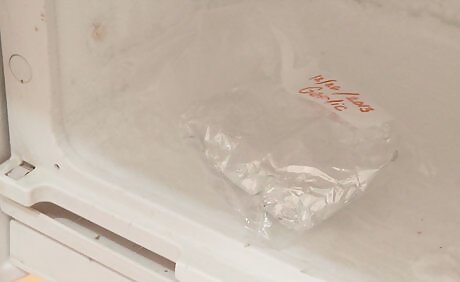
Freeze garlic. Although some people are opposed to freezing garlic, as it is said to change the texture and flavor, freezing can be a good option for those who use garlic infrequently or for people with leftover cloves that they don't want to go to waste. You can freeze garlic in one of two ways: You can freeze whole, unpeeled garlic cloves by wrapping them in plastic wrap or aluminum foil, or popping them in a freezer bag, and placing in the freezer. You can then remove individual cloves as needed. Alternatively, you can peel the garlic cloves, crush or chop them finely and place the garlic in a plastic freezer bag or wrap it in some plastic freezer wrap. If the garlic becomes stuck together when frozen, you can grate off as much of the frozen garlic as needed.
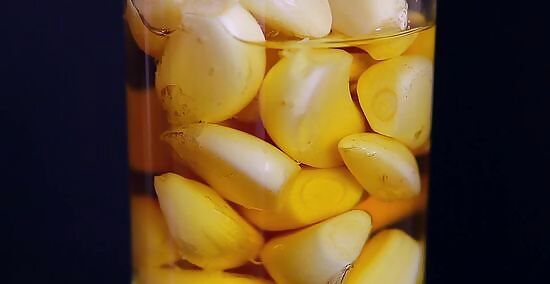
Store garlic in oil. There has been some controversy about storing garlic in oil, as keeping garlic-infused oil at room temperature has been associated with the growth of the bacteria clostridium botulinum which can cause a fatal illness known as botulism. However, if the garlic oil is stored in the freezer, the risk of it developing this bacteria are removed. To safely store garlic in oil: You can peel individual garlic cloves and completely submerge them in oil in a glass jar or plastic container. Tightly seal the jar or container with a lid and place directly into the freezer. Use a spoon to scoop out the garlic as needed. Alternatively, you can make a puree of garlic and olive oil by mixing one part peeled garlic cloves with two parts olive oil in a blender or food processor. Transfer the puree to a freezer-safe container with a tight-fitting lid and place in the freezer. This method is very convenient for cooks, as the oil prevents the puree from freezing so it can be scooped out and placed directly on a pan.
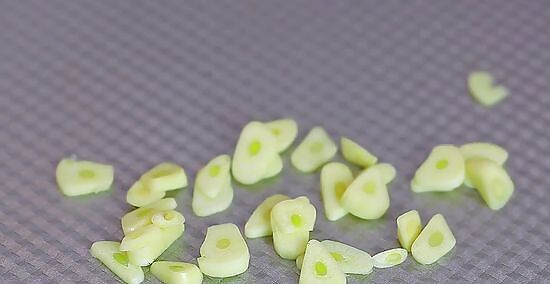
Store garlic in wine or vinegar. Peeled garlic cloves can be pickled in wine or vinegar and stored in the refrigerator for up to four months. You can use a dry red or white wine, or a white or white wine vinegar. To store garlic in this way, fill a glass jar with peeled garlic cloves, then pour in your chosen wine or vinegar to fill up the available space. Seal the jar tightly and place in the refrigerator. To add extra flavor to your pickled garlic, you may add a tablespoon of salt (per cup of liquid) along with any dried herbs, such as red pepper flakes, oregano, rosemary or bay leaves. Shake the jar well to mix the contents. Although the pickled garlic should last in the refrigerator for up to four months, you should discard the contents of the jar if you see any signs of mold forming on the surface of the liquid. Never store the pickled garlic at room temperature, as mold will form very quickly.
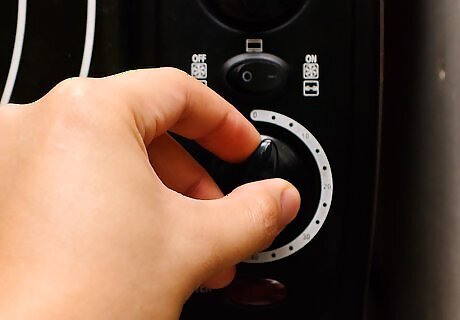
Dry garlic. Another easy way to preserve your garlic is to dry it out. Dried garlic will condense, so a even a large amount of garlic will take up very little space in your pantry. When used in cooking, the dried garlic will absorb water and give great flavor to your dish. There are two ways to dry garlic, depending on whether you have a food dehydrator or not. You can dry garlic in a food dehydrator by peeling the cloves and cutting them in half lengthwise. You should only use plump, unbruised cloves for dehydrating. Place them on the tray of your dehydrator and follow the manufacturers instructions for best heat settings. The garlic is completely dried when it becomes crisp and brittle. If you don not have a food dehydrator, you can use the same process, using the oven instead. Place the halved garlic cloves on a baking dish and bake at 140 °F (60 °C) for two hours. Then turn the heat down to 130 and continue to bake until the garlic is fully dried.

Make garlic salt. You can use your dried garlic to make garlic salt, which is adds a great, subtle garlic flavor to dishes when cooking. To make the garlic salt, simply blend the dried garlic in a food processor until it forms a fine powder. Add in four parts of sea salt for every one part of garlic and process for minute or two to combine. Don't process the sea salt and garlic powder for any longer than two minutes or it will clump together. Store the garlic salt in a glass jar with a tight-fitting lid and keep in a cool, dark kitchen cupboard.


















Comments
0 comment